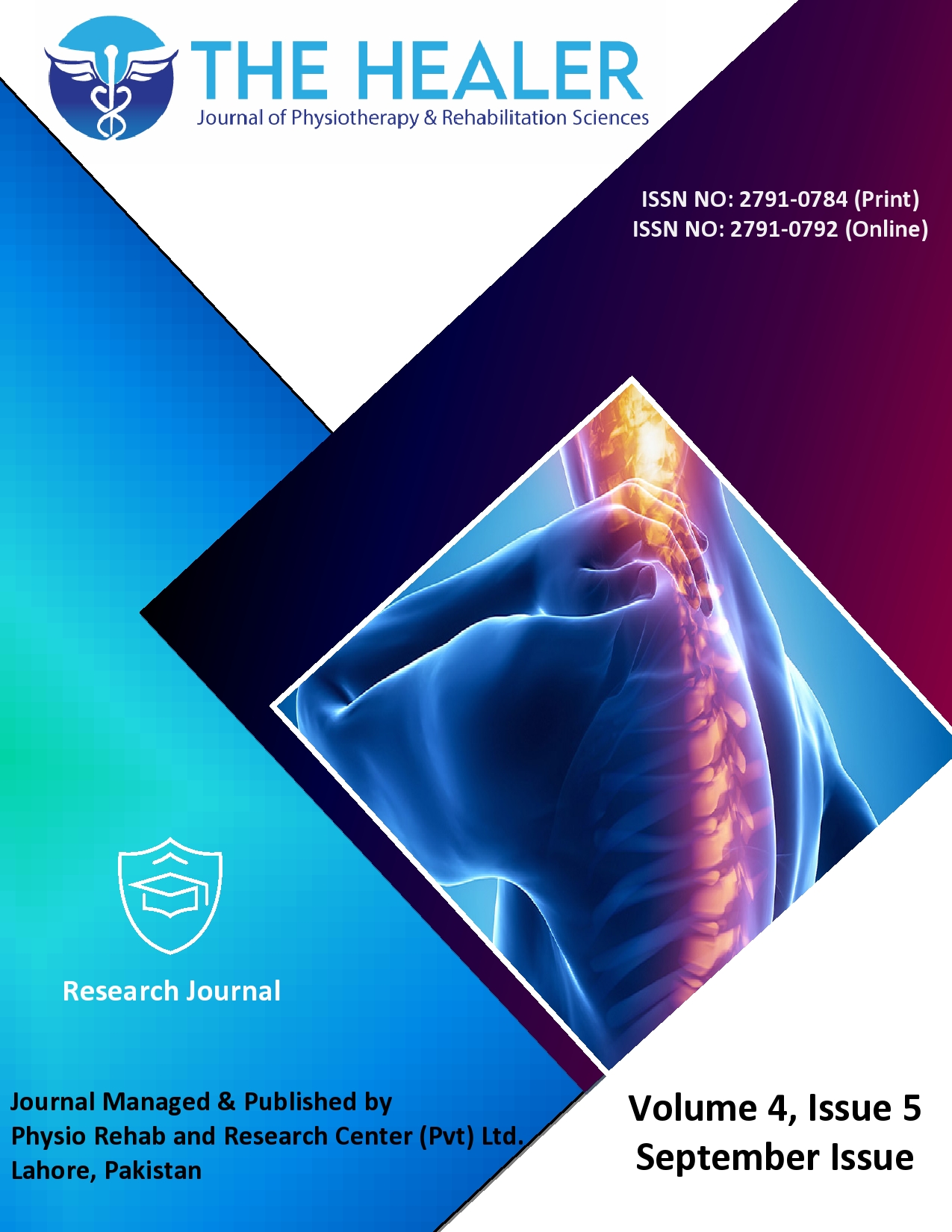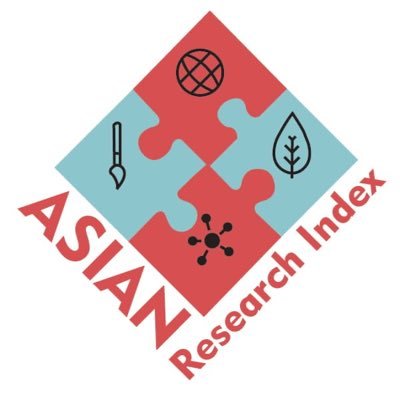Outcomes of Brisk Walking on Systemic Arterial Hypertension in Young Males
Brisk Walking and Systemic Arterial Hypertension in Young Males
DOI:
https://doi.org/10.55735/hjprs.v4i5.293Keywords:
Brisk walking , Physical activity , Systemic arterial hypertensionAbstract
Background: Elevated blood pressure, or hypertension, is a main cause of cardiovascular disease and a major global health concern. Prehypertension, a precursor to hypertension, poses increased risks. It can be delayed in young adults with an emphasis on lifestyle modifications, especially physical exercise. Objective: To analyse the outcomes of brisk walking on systemic arterial hypertension in young males. Methodology: A six-month analytical cross-sectional study conducted at Lahore College of Physical Therapy, Lahore Medical and Dental College, involving 133 male participants aged 18-34 years, utilised a sphygmomanometer and a self-structured questionnaire to assess blood pressure and its related risk factors, ensuring ethical approval, informed consent, and rigorous data analysis using SPSS software. Exclusion criteria included active or passive smoking, or having quit smoking within the past six months; a diabetic history with fasting glucose >100mg/dL; and obesity, defined as a body mass index >30 or a waist circumference >40inches for men and >35inches for women. The study prioritized confidentiality, participant well-being, and transparent reporting of methods and findings. Continuous variables were presented as means and standard deviations, while categorical variables were shown as frequencies and percentages. The results were illustrated using graphs and charts. The ethical board of Lahore College of Physical Therapy approved the research. Confidentiality was maintained throughout the study, and informed consent was obtained from all participants. Results: The study, involved 133 male participants from different parks of Lahore, with an age range of 18 to 34 years. Findings show clear differences in the pre and post-values of BP, emphasizing the importance of brisk walking in controlling and managing hypertension and its related risk factors. The pairwise comparison yielded a p-value of 0.00, further confirming the statistical significance of the differences observed between the pre-systolic and post-systolic measurements. Conclusion: This study concluded that an active lifestyle benefits blood pressure and cardiac health in patients with systemic arterial hypertension. The results indicate that brisk walking positively impacts blood pressure control in those with systemic hypertension.
Downloads
References
Singh S, Shankar R, Singh GP. Prevalence and Associated Risk Factors of Hypertension: A Cross‐Sectional Study in Urban Varanasi. International Journal of Hypertension. 2017; 2017(1): 5491838.
Judd E, Calhoun D. Apparent and true resistant hypertension: definition, prevalence and outcomes. Journal of Human Hypertension. 2014; 28(8): 463-8.
Pescatello LS, Buchner DM, Jakicic JM, Powell KE, Kraus WE, Bloodgood B, et al. Physical activity to prevent and treat hypertension: a systematic review. Medicine & Science in Sports & Exercise. 2019; 51(6): 1314-23.
Verma N, Rastogi S, Chia YC, Siddique S, Turana Y, Cheng Hm, et al. Non‐pharmacological management of hypertension. The Journal of Clinical Hypertension. 2021; 23(7): 1275-83.
Sarki AM, Nduka CU, Stranges S, Kandala N-B, Uthman OA. Prevalence of hypertension in low-and middle-income countries: a systematic review and meta-analysis. Medicine. 2015; 94(50): e1959.
Iqbal M, Akram M, Rashid A, Zainab R, Laila U, Khalil MT, et al. Prevalence of hypertension and associated co-morbidities in Pakistan. Mathews Journal of Nursing and Health Care. 2023; 5(1): 1-7.
Guwatudde D, Nankya-Mutyoba J, Kalyesubula R, Laurence C, Adebamowo C, Ajayi I, et al. The burden of hypertension in sub-Saharan Africa: a four-country cross-sectional study. BMC Public Health. 2015; 15: 1-8.
Asemu MM, Yalew AW, Kabeta ND, Mekonnen D. Prevalence and risk factors of hypertension among adults: A community based study in Addis Ababa, Ethiopia. PLoS One. 2021; 16(4): e0248934.
Sharma JR, Mabhida SE, Myers B, Apalata T, Nicol E, Benjeddou M, et al. Prevalence of hypertension and its associated risk factors in a rural black population of Mthatha Town, South Africa. International Journal of Environmental Research and Public Health. 2021; 18(3): 1215.
Masilela C, Pearce B, Ongole JJ, Adeniyi OV, Benjeddou M. Cross-sectional study of prevalence and determinants of uncontrolled hypertension among South African adult residents of Mkhondo municipality. BMC Public Health. 2020; 20: 1-10.
Zhang Y, Moran AE. Trends in the prevalence, awareness, treatment, and control of hypertension among young adults in the United States, 1999 to 2014. Hypertension. 2017; 70(4): 736-42.
Mohammed Nawi A, Mohammad Z, Jetly K, Abd Razak MA, Ramli NS, Wan Ibadullah WAH, et al. The prevalence and risk factors of hypertension among the urban population in Southeast Asian countries: a systematic review and meta‐analysis. International Journal of Hypertension. 2021; 2021(1): 6657003.
Kjeldsen SE. Hypertension and cardiovascular risk: General aspects. Pharmacological Research. 2018; 129: 95-9.
You Y, Teng W, Wang J, Ma G, Ma A, Wang J, et al. Hypertension and physical activity in middle-aged and older adults in China. Scientific Reports. 2018; 8(1): 16098.
Bai X, Soh KG, Omar Dev RD, Talib O, Xiao W, Cai H. Effect of brisk walking on health-related physical fitness balance and life satisfaction among the elderly: a systematic review. Frontiers in Public Health. 2022; 9: 829367.
Ko J, Deprez D, Shaw K, Alcorn J, Hadjistavropoulos T, Tomczak C, et al. Stretching is superior to brisk walking for reducing blood pressure in people with high–normal blood pressure or stage I hypertension. Journal of Physical Activity and Health. 2020; 18(1): 21-8.
Papathanasiou G, Zerva E, Zacharis I, Papandreou M, Papageorgiou E, Tzima C, et al. Association of high blood pressure with body mass index, smoking and physical activity in healthy young adults. The Open Cardiovascular Medicine Journal. 2015; 9: 5.
Cornelissen VA, Smart NA. Exercise training for blood pressure: a systematic review and meta‐analysis. Journal of the American Heart Association. 2013; 2(1): e004473.
Sun J-Y, Hua Y, Zou H-Y-Y, Qu Q, Yuan Y, Sun G-Z, et al. Association between waist circumference and the prevalence of (Pre) hypertension among 27,894 US adults. Frontiers in Cardiovascular Medicine. 2021; 8: 717257.

Downloads
Published
License
Copyright (c) 2025 The Healer Journal of Physiotherapy and Rehabilitation Sciences

This work is licensed under a Creative Commons Attribution 4.0 International License.














